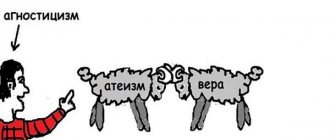Conflictology: definition and meaning
Psychologists and psychotherapists consider conflictology one of the most important scientific disciplines. She studies a problematic situation from all sides - helps to identify the object and subject of the conflict, teaches how to regulate it and end it. In the modern world, such knowledge can be very useful not only for specialists, but also for ordinary people.
As practice has shown, people who master the basics of conflict management get more pleasure from communication and move up the career ladder faster. We think this is a strong enough argument for spending your time studying the essence of conflicts in society.
Conflict is the subject of conflictology
Most often, conflict is understood as a process, the termination of which is the end of the dispute itself. But, in addition to this, it has its own structure; it does not depend on the circumstances and size of the conflict situation. Moreover, the interesting fact is that without the components of the structure the situation itself cannot exist. It is a quantity that is both part of the conflict and its “fuel”, without which the situation fades and loses its meaning.
Sometimes instead of the word “conflict” the phrase “conflict situation” is used. These values are quite close, but not identical. Yes, they have exactly the same structure. But a conflict situation is just a part of the conflict - a cast that reflects the entire structure of the conflict as a whole.
Structure: object, subject and participants in the conflict
Since we have already found out that the conflict has its own clear structure, we can conclude that it can be analyzed. It is analysis that helps end the conflict by identifying all structural components and determining the needs of all participants in the situation. At the same time, it is very important to clarify the connections between them and the conditions in which the conflict directly occurs.
The structure of the conflict situation itself looks quite simple:
- object and subject of conflict;
- its participants;
- the environment in which the situation develops.
In fact, the apparent simplicity of the conflict structure hides many pitfalls. Therefore, we propose to analyze all the points in more detail and detail.
INTRODUCTION
Conflict is an integral element of the functioning of any society.
In modern society, in conditions when the “speed of life” increases every day, when stress is familiar to almost everyone firsthand, when everyone strives for something and is afraid of something, the problems posed by conflictology - prevention, analysis, ending conflicts - have become especially relevant. These problems are relevant, first of all, because conflicts can be present in any sphere of society, and a conflict left to its own devices can lead to undesirable consequences, both for individuals and for society.
The object of this course work is conflict.
The subject is conflict management.
The purpose of the course work is to identify methods and means of conflict management.
Coursework objectives:
1. consider the essence and structure of the conflict;
2. determine the functions of the conflict;
3. highlight the essence of the concept of conflict management;
4. consider methods, styles and models of conflict resolution and regulation, as well as features of prevention and stimulation.
Subject of the conflict
The study of the structural vertical is impossible without a detailed analysis of all its parts. Determining the subject of a conflict can be quite difficult even for experienced specialists. Moreover, conflictology does not always separate the subjects and objects of a conflict situation, but this is simply necessary. Otherwise, it will be almost impossible to resolve situations and find out the needs of all participants. After all, the subject, the participants in the conflict and the object are in constant interaction and are firmly connected with each other.
The subject of conflict is usually understood as disagreements and contradictions between the parties to the dispute, presented in the form of an obvious or fictitious problem. Moreover, for all parties to the conflict, its subject may be completely different, which does not prevent the parties from fighting to achieve their goals. The subject of the conflict may represent various material values, religious beliefs, social status and other issues. It is worth keeping in mind that without a subject, any disagreement is simply impossible; it is the most important part of the conflict structure. We can say that this is the very contradiction that served as the trigger for the situation. Elimination of these contradictions leads to the reduction of disagreements to a zero level of aggression.
Most often, the subject of the conflict is hidden in the depths of the structure and is difficult to determine immediately. In many situations, the duration of the dispute is determined by the fact that its subject remains veiled. It is worth considering that an object is a moving quantity. In long-term conflict situations, contradictions tend to develop at a certain amplitude. Before its conclusion, the dispute goes through several stages of fading and flaring up, which indicates some instability of the contradictions.
initial stage
It is worth noting that the development of the confrontation occurs gradually. The initial stage of the conflict is characterized by a systematic increase in tension between potential warring parties. In this case, the object of the conflict is the opposition of interests, which is not yet fully realized.
The gradual increase in tension is caused by the following objective reasons:
- infringement of interests or manifestation of disrespect and intolerance towards the position of a particular person or group;
- painful or inadequate response to changes that occur in the social environment;
- incorrect or distorted presentation of information about the situation.
The pre-conflict stage goes through three main phases in its development:
- the emergence of a contradiction that provokes the emergence of an atmosphere of mistrust;
- attempts to defend one’s own position without trying to understand the opponent;
- growing tension and aggression.
It is the pre-conflict stage that determines the further development of the situation. The best option is to smooth out contradictions or consciously avoid them. There is also the option of moving to open confrontation.
Example of a subject of conflict
For those who find it difficult to understand what the subject of the conflict is, an example will help to correctly analyze the conflict situation. Imagine two young men vying for a girl's attention. One wants to be with her, but the other is simply not ready to give her to his rival. The desires of both guys are a matter of conflict. Although they relate to the same object, the difference between them is obvious.
Another example would be a hypothetical situation with the introduction of a schedule with extended working hours in a large company. This topic is discussed at the meeting, and communication gradually turns into a furious argument. In this case, the subject of conflict is the motivation of opponents and defenders of the innovation. Moreover, it can be completely different for each participant in the conflict.
What is the object of the conflict?
The object of a conflict situation can be called what caused it. In some cases, it is understandable and does not require time to identify, while in others it is more difficult to identify it than the subject and subject of the conflict.
The cause of the conflict (or object) can be a spiritual, material or social value. In any case, the quarrel arises due to the desire to possess this object alone - it arises at the intersection of the interests of all participants in the process. Surprisingly, there are quite a few options for constructing a controversial situation. Most of them are formed when one side is ready to divide an object in order to end the situation, but the other resists and insists on the indivisibility of the object. Solving a problem like this is quite difficult.
The causes of conflict should be considered at the micro, meso and macro levels.
Each of these levels has its own specific causes of conflict. Nevertheless, it is possible to identify a number of reasons that form conflictogens at different levels and at the same time have different scales of coverage of the object.
For example, immorality at the micro level causes anger, irritation and condemnation on the part of the opponent; the same thing at the macro level leads society to a state called anomie (social disorientation of society).
Thus, the study of the causes of conflict at various levels makes it possible to establish the complexity of contradictions, their scope, and subsequently apply the most appropriate algorithms to eliminate them.
Types of conflict objects
When approaching the analysis of a conflict, we should not forget that objects can differ from each other not only in structure, but also in type or appearance. The most common definitions of the type of object in a conflict situation are:
- illusory;
- true;
- false;
- current;
- latent, etc.
There is no need to dwell on each type separately. It is enough to know that determining the type of object in some situations becomes the dominant value in bringing the dispute to the final stage.
Examples of highlighting objects and subjects of conflict
Remember that it is impossible to overcome a situation without identifying the subject and object of the conflict. The example of a conflict situation given in our article will help you learn to classify and identify the structural components of the problem. Imagine two kids in a sandbox fighting over a toy left by a third. One wants to play with her in the sandbox, and the other wants to take her home. Here the toy appears as an indivisible object of conflict, despite the fact that it does not belong to any of the participants in the situation. But the intentions of children are a matter of conflict.
Quite often these two concepts are confused with each other, which interferes with solving the problem. By identifying a false object, you can lose the opportunity to overcome the conflict and take the path of mutual understanding for many years.
Table of contents
Introduction
Chapter 1. The concept of the object and subject of conflict in conflictology
Chapter 2. Object and subject in interpersonal and intergroup conflicts
Conclusion
Bibliography
Introduction
Any conflict is associated with certain external and internal circumstances, the range of which is always quite wide, changeable and cannot be listed with exhaustive completeness. However, there is something basic that allows one to unmistakably identify a particular conflict or classify it into a certain category. When arranging the many characteristics of a conflict, two of them are usually identified, which make it possible to more clearly determine its essence and direction:
)object due to which a conflict situation is created;
)subject - something that is subject to direct research in a specific object.
Determining the object (subject) in each specific conflict is far from easy. Subjects and participants in the conflict, pursuing their real or imaginary goals, can hide, disguise, and replace the sought-after motives that prompted them to confrontation.
Manipulation of an object can bring significant benefits to one of the parties to the conflict and significantly complicate the situation of the other. For example, a person who committed murder may be acquitted by the court if the defense proves that its client was forced to use a weapon in self-defense. Difficulties in finding the actual object of the conflict most often arise in complex conflicts, when some contradictions are superimposed on others or some causes of the conflict are replaced by others. Sometimes the subject of the conflict himself is not fully aware of the real motives of the confrontation. For example, in a conflict between a manager and his subordinate, the following situation may arise:
) the manager accuses the subordinate of unwillingness to work with the required efficiency;
) the subordinate accuses the manager of a biased attitude towards him personally;
The real object of the conflict may be that the subordinate does not have the necessary knowledge and skills to perform the tasks assigned to him.
Determining the main object (subject) is a prerequisite for the successful resolution of any conflict. Otherwise, the conflict will either not be resolved in principle (a deadlock situation), or will not be resolved in full, and “smoldering coals” will remain in the interaction of the subjects for new clashes.
The purpose of the work is to identify the main characteristics of the subject and object of the conflict and the main differences between them.
conflict interpersonal intergroup
Chapter 1. The concept of the object and subject of conflict in conflictology
In the scientific literature, there are no particular contradictions in the use of the concepts “subject” and “object” of a conflict. Some researchers of the problem prefer the concept of “object of conflict” (for example, L. Kozer), others - the concept of “subject of conflict” (for example, M. M. Lebedeva), others use both of them (A. V. Dmitriev, E. M. Babosov, A. R. Aklaev and others).
So, A.V. Dmitriev understands the subject of a conflict as an objectively existing or conceivable (imaginary) problem that serves as a cause of discord between the parties. Each side is interested in resolving this problem in its favor. The subject of the conflict, in his opinion, is the main contradiction, because of which and for the sake of resolving which the subjects enter into confrontation. These may be power relations, the desire to possess certain values, the desire for primacy or compatibility (in cognitive conflict this is called the subject of discussion).
The search for ways to resolve a conflict, as a rule, begins with defining its subject, and this is often not easy to do. Many conflicts have such an intricate and complex background that a specialist is forced, like an archaeologist, to uncover one layer after another. The layering of problems can make the subject of the conflict itself completely diffuse, without clear boundaries, flowing. A conflict may have a main subject that disintegrates into separate subjects and multiple “pain points.” Examples of conflict with multiple causes and private objects are family troubles or interethnic conflicts.
The subject of the conflict may be not only the desired goal of the mediator or arbitrator, but also a point of discussion between the participating parties.
In this case, negotiations are conducted on the subject of the very conflict of interest that prompted the parties to negotiate. It can be noted, however, that in negotiations the parties act differently than in conflict. Negotiations, if they are conducted according to the rules, are akin to a scientific discussion, and sometimes to market bargaining.
According to some researchers, “in fact, all conflicts are about two things, or even one: about resources and about control over them. Power, from this point of view, is a variant of control over resources, and property is the resource itself. Resources can be divided into material and spiritual, and the latter, in turn, can be differentiated into components” (V.A. Yadov). This point of view, although not in such a categorical form, is supported by many experts. When expressing similar thoughts, they often use the concept of an object of conflict, by which they mean a specific material or spiritual value that both parties to the conflict strive to possess or use. The object of conflict, in fact, can be any element of the material world and social reality that can serve as the subject of personal, group, public, or state claims. To become an object of conflict, this element must be at the intersection of the interests of various social actors who strive for sole control over it. There are many examples of such situations: from children quarreling over a beautiful toy to tension in relations between two states due to the unresolved issue of ownership of a particular territory.
The object of conflict in a specific system of relations is always a certain scarce resource. One position of director, for which two deputies apply. One Black Sea Fleet and a military port and two powers laying claim to them... Indeed, compensating for resource shortages in many cases can solve a controversial problem. However, resource scarcity is not always the object of conflict. It could be a conflict of values or a dispute over belonging to one group or another [1].
The subject of the conflict can be economic and social benefits, material and spiritual values, political regimes, legal institutions, political and public leaders, their programs, ideological doctrines, religious beliefs, human rights and freedoms, moral and aesthetic ideals, various traditions and much more, which constitutes the elements of civilized social life.
The object of the conflict can be true or false, potential or actual, false and illusory, displaced, etc. The subject of the conflict is always real and relevant. The struggle between opponents can turn out to be life or death, despite the fact that ideas that are utopian in content may be defended in the dispute.
The object of the conflict can be either explicit or latent, while the object always appears clearly.
The following characteristics of the conflict object are distinguished:
.the object of conflict does not exist on its own, it becomes such when there is interest in it on the part of interacting subjects (when there is a desire to possess it, use it, control it, appropriate it, etc.);
.scarcity of the object of the conflict and the need for its use by both parties;
.specifically the historical nature of the objects of the conflict (the second world war took place over land, the next one could have, for example, water as an object);
.relativistic nature of the object, associated with different subjective assessments of its significance for different subjects;
.a realistic object of conflict and an unrealistic one - one that contains a goal and content in itself (deviant behavior not for the sake of achieving some concessions, but for the sake of the act itself) [2].
The object of the conflict, according to O.N. Gromovoy - what each of the conflicting parties claims for, what causes their opposition, the receipt of which by one of the participants completely or partially deprives the other side of the opportunity to achieve their goals. For example, resources, property rights, the right to make decisions, a new position.
For a conflict situation to arise, believes O.N. Gromov, the presence of an object of conflict is not necessary; a conflict can begin without it. A bad mood, hostility towards a work colleague, or lack of perception of individuals by each other can serve as causes of conflict without a clearly defined object. At first glance, it seems that people have nothing to share, but this does not reduce the level of conflict interaction and the complexity of its resolution.
A conflict situation is a fairly mobile and unstable concept, it can change when any of its elements change: the views of opponents, object-opponent relations, substitution of the object of the conflict, the appearance of conditions that complicate or exclude the interaction of opponents, the refusal of one of the subjects from further interaction, etc. [3].
The subject of the conflict, according to O.N. Gromovoy, is an objectively existing or imaginary problem that causes discord between the parties (the problem of power, relationships, primacy of employees, their compatibility). This is precisely the contradiction that causes conflict.
For example. Division of any resource (benefits, inheritance, apartments). If the rules for this division are developed, with which all participants agree, then neither a problem nor a conflict will arise. If there are no rules or at least one of the participants does not agree with them, then the problem arises of how to divide. If this problem is unresolved, a conflict develops, the subject of which is the lack of rules for relationships during distribution, and the object is resources [3].
The object of the conflict does not exist on its own, regardless of its participants. In order for any thing, property or relationship to become an object of conflict, they must be involved in the process of interaction of interests and needs of individuals, social groups or communities. Thus, nature, resources, machines, etc. in themselves are not yet objects of conflict. They become such only when they begin to show interest in them, when there is a desire to control, use or appropriate them.
But even in this case, a conflict may not arise. Interest is a necessary but not sufficient condition for conflict. For example, if certain natural resources are available in abundance, then conflict does not arise regarding them. It arises when an object involved in the sphere of interests and needs of social subjects is available in limited quantity or quality and is not able to fully satisfy all interacting parties. In other words, the object of conflict becomes such only when it is scarce and inaccessible to everyone who claims it.
Many authors highlight such a characteristic of the object of conflict as its indivisibility. It can be either a physical property of an object or a consequence of the desires of one of the opponents. For example, there can only be one prize for first place in a competition, and the winner has the right to claim its sole possession. Otherwise, “if a certain object of dispute is divisible and the method of division is recognized as fair by all participants, then a dispute should not arise, i.e. There should be no conflict situation.”
It should also be noted the relativistic nature of the object of the conflict. In different situations, different subjects of conflict in relation to the same object may have different assessments. This discrepancy in assessing the significance of an object can cause conflict among the participants in the interaction. Thus, the creator and manager of the project can consider his brainchild to be brilliant and put every effort into its implementation. But at the same time, he may seem worthless to his subordinates. And this internally contradictory situation can persist for quite a long time.
When analyzing a conflict, it is sometimes difficult to identify its true object. Due to various circumstances and motives, people sometimes tend to camouflage the true object of the conflict. Thus, in the mouths of even the most notorious careerists and egoists participating in the political struggle, it is always waged solely for the opportunity to “bring as much benefit as possible to the people, society,” etc. Economic fights between oligarchs are, of course, a struggle for the good of the people, etc. Even in family life, people often tend to camouflage the real object of the conflict. Why did a conflict situation arise and “everything got mixed up in the Oblonskys’ house”? - Because Stiva Oblonsky stopped loving his wife Daria Alekseevna and cheated on her. But how many people in such a situation directly say this? - Very few. Most often they talk about how they “didn’t get along,” “circumstances are to blame,” or, at worst, the notorious mother-in-law.
Thus, the objects of conflict can be very different, including more or less obvious or latent. However, in general, in our opinion, there are no “objectless” conflicts. Even if we take an example already used in literature, such as an attack by a hooligan on a random passer-by who reprimands him. In our opinion, the problem of understanding the essence of the conflict and its object arises here not when a random passer-by makes a remark to a hooligan, but when we consider the action of the hooligan himself, causing “out of the blue” harm to another person. We are talking about the case when the conflict is completely determined by the subjective motives and internal aspirations of the individual, which can only be satisfied in a fight, in the struggle with others. In this case, the purpose of the conflict or its object is the weakening of tension achieved through an act of aggression. Here, conflict is a way to satisfy the need to “let off steam” for one or both participants in the confrontation.
Even in the case when one of the participants in the conflict has nothing to do with its occurrence, the object of the conflict exists, although it may be latent. Moreover, the conflict itself can act not only as a means to achieve a goal, but also contain “a goal and content within itself.” G. Simmel was the first to draw attention to this. Thus, various kinds of hippies, punks, fans and other groups often organize protest demonstrations, pogroms, various kinds of hooliganism for the sake of the protest itself, demonstration of deviant behavior, which can also be of a conflict nature [2].
Chapter 2. Object and subject in interpersonal and intergroup conflicts
Interpersonal conflict manifests itself in interactions between two or more individuals. In interpersonal conflicts, subjects confront each other and sort out their relationships directly, face to face. This is one of the most common types of conflicts. They can occur both between colleagues and between the closest people. In an interpersonal conflict, each side strives to defend its opinion, to prove the other wrong; people resort to mutual accusations, attacks on each other, verbal insults and humiliations, etc. This behavior causes acute negative emotional experiences in the subjects of the conflict, which aggravate the interaction of the participants and provoke them to extreme actions. In situations of conflict, it becomes difficult to manage your emotions. Many of its participants experience negative well-being for a long time after the conflict is resolved. A conflict situation is characterized by the presence of opposing goals and aspirations of the parties to master one object.
For example, the issue of leadership in a study group between students. For a conflict to arise, a reason is needed that activates the action of one of the parties. The reason may be any circumstances, even the actions of a third party. In the above example, the reason could be a negative opinion about one of the candidates for leadership of any student.
In a conflict situation, the subjects and object of the conflict are identified.
The subjects of interpersonal conflict include those participants who defend their own interests and strive to achieve their goals. They always speak on their own behalf.
The object of an interpersonal conflict is considered to be what its participants claim. This is the goal that each of the warring entities strives to achieve. For example, a husband or wife claims sole control of the family budget. In this case, the family budget may become the object of disagreement if the other party considers its rights to be infringed.
The subject of conflict in such a situation is the contradictions in which the opposing interests of husband and wife are manifested. In this case, the subject will be the desire of the spouses to acquire the right to manage the family budget, i.e. the problem of mastering an object, the claims that subjects make to each other.
Intergroup conflict is a conflict in which the subjects are groups pursuing goals that are incompatible with the goals of the opposing group. A striking example of intergroup conflict is the ongoing conflict between trade unions and management.
Social group interests focus on three problems:
-social resources (economic - finance, equipment, technology, food; power, information, etc.);
-social statuses (equal-unequal, higher-lower, central-peripheral);
-sociocultural values (religious, ethnic, moral, conservative, liberal, etc.)
All of them together constitute the object of intergroup conflicts.
Consequently, the subject of intergroup conflicts may be, for example, the problem of dividing social resources. For example, the sales department tends to be customer-oriented, while the manufacturing department is more concerned with cost-efficiency and economies of scale. Holding large inventories in order to quickly fill orders, as the sales department prefers, means increasing costs, and this is contrary to the interests of the production departments.
You can also give an example of the problem of relationships between formal and informal groups in an organization. Even in the best organizations, conflicts can arise between such groups. Informal groups that believe that the leader is treating them unfairly may become more united and try to “get even” with him by reducing productivity.
The subject of the conflict of sociocultural values is ideological, political, religious and other disagreements between different groups and communities, for example, the struggle between supporters of conservatism and liberals for their interests, etc.
In connection with the considered nature of the object of conflict, two types of conflicts are distinguished in conflictology: realistic and unrealistic.
A conflict that serves as a means to achieve some result outside of the conflict is realistic.
And if the desired result can be achieved by other means, they should (or can) be applied. In this case, conflict is only one of several possibilities for achieving a goal.
Conflictology mainly studies realistic conflicts, which act as a means of achieving real objects that lie beyond the scope of the confrontation itself.
Another type is unrealistic conflict. Its object is inseparable from the conflict itself and coincides with it. Thus, there are cases when conflict arises solely due to aggressive impulses that seek expression. At the same time, the object at which it is directed does not represent any significance; it is chosen completely spontaneously. For example, in the case of a bully who does not care who he attacks. Here the conflict does not arise to achieve any real positive result, but rather as an outbreak of aggressive energy. But there is an object of conflict in this case as well. It consists of the need to relieve tension, “discharge”, “let off steam”.
When talking about the difference between realistic and unrealistic conflicts, it should be borne in mind that in real life they can interact and complement each other. For example, participants in military battles, along with the operations and actions necessary to complete the assigned task, can commit actions that are not such, but are associated with the release of tension, the release of accumulated feelings of aggression.
Thus, each conflict has its own object and its own subject. In every conflict there are certain goals, motives and interests of the parties that come into conflict. If, during the interaction of individuals, there is no object about which they enter into it, then we can talk about the absence of goals, motives and interests of such interaction. But in this case it makes no sense to talk about conflict at all. An example of this would be the accidental killing of one individual by another. In other words, not all harm by one individual to another results from conflict.
Conclusion
Thus, each conflict has its own object and its own subject. In every conflict there are certain goals, motives and interests of the parties that come into conflict. If, during the interaction of individuals, there is no object about which they enter into it, then we can talk about the absence of goals, motives and interests of such interaction.
The main differences between the concepts of “object” and “subject” of a conflict are:
. Conflicts arise regarding an object, but their essence is expressed in the subject of the conflict. Therefore, the resolution or settlement of a conflict is primarily associated with the elimination not of its object, but of its subject. Although this does not exclude the possibility that both can occur simultaneously. Moreover, it also happens that the object of the conflict no longer exists, but the contradiction between the subjects of the conflict remains. So, for example, if a bonus for which employees of an organization applied and because of which a confrontation arose has already been distributed or cancelled, then in most cases the conflict disappears along with this. But it may happen that it will be continued if the conflictual relations between the parties to the dispute have gone too far.
. It is also important to note that the object of the conflict can be either true, real, or potential, false, illusory. People enter into a struggle not only for real material goods and resources, but also by asserting and defending illusory ideals and ideas. But the subject of the conflict is always real and always relevant. The struggle, which is an expression of the contradiction between opponents, is always real and sometimes is fought to the death, even when utopian ideas are defended.
. The next difference between the object and the subject of the conflict is that the object of the conflict can be either explicit or latent (hidden). But the subject of the conflict - the contradiction between its opponents - always manifests itself clearly. Parents may not understand why their child is suddenly offended by them, but they cannot help but notice the very fact of this offense. And the person himself sometimes does not clearly understand why he suddenly felt “uneasy in his soul,” although the fact of anxiety is obvious.
It should be noted that conflicts arise regarding any object, but their essence is expressed in the subject of the conflict. Therefore, the resolution or settlement of a conflict is primarily associated with the elimination not of its object, but of its subject. It is also important to note that the object of the conflict can be either true, real, or potential, false, illusory. People enter into a struggle not only for real material goods and resources, but also by asserting and defending illusory ideals and ideas, while the subject of the conflict is always real and always relevant [2].
Bibliography
1. Dmitriev A.V. Conflictology: Textbook. - M.: Gardariki, 2000.
2.Burtovaya E.V. Conflictology: Textbook. - M.: UNITY, 2002.
.Gromova O.N. Conflictology: Course of lectures. - M.: Eksmos, 2000.
.Kozyrev G.I.. Political conflictology: Textbook.
- M.: Publishing House "FORUM": INFRA-M, 2008. Tags: Subject and object of the conflict Abstract Psychology
Difference between subject and object
In order to have the skill of resolving conflict situations, it is necessary to clearly understand that the subject of the conflict and its object have a number of differences. Briefly they can be presented as follows:
- Resolution of the problem is possible only by eliminating its subject. The object of the conflict has no effect on ending the situation. It is likely that elimination can occur simultaneously, but the dispute that no longer has a subject will be considered exhausted. For example, quarrels over a bonus may not subside in the team even after it has been distributed. In this particular situation, the bonus is an object, but the desire to receive it is an object in a conflict situation.
- The subject of conflict can only be something real, because contradictions and struggle are expressed in certain actions. Whereas an object can have many forms and is often illusory.
- The object of the conflict may be hidden for a long time, but the subject is always very specific and defined. A good example is the situation with children's grievances that relate to the object of the conflict. They are often incomprehensible to parents and seem insignificant. But the expression of this resentment by a child is the subject of a controversial situation, and parents always notice and understand these manifestations.
I would like to say that at first it is quite difficult to understand the differences between the object and the subject of the conflict. Therefore, if you cannot do this, do not be discouraged - over time, the structure of problem situations will become much clearer.
conclusions
The object of conflict is a certain category around which confrontation arises between individuals. At the same time, the confrontation itself should be characterized by such features as bipolarity (the presence of a contradiction), activity and participation of several subjects. Only in this case the situation has the right to be called a conflict. In this case, it is not at all necessary to enter into open confrontation. The parties can find a compromise or avoid the dispute. Also, the weaker participant may submit.
Conflict situations are subject to different types. Thus, a false confrontation arises without significant reasons, but a true conflict has not only a specific reason, but also specific participants. If we are talking about a potential dispute, then at the moment there are all the prerequisites for it, but the situation itself has not yet received proper development. The displacement of the conflict occurs as a result of a false reason, but the true reason remains unknown. It is also quite common for a situation where outsiders are involved in the confrontation, and the culprit watches from the sidelines.
The object of the conflict is decisive not only in the nature, but also in the outcome of the confrontation. Thus, it can be indivisible (whole), due to which the most acute confrontations arise. It is also quite acceptable to have an object that can be shared. In this case, a compromise and a number of concessions are real. Another category of objects are those that can be divided in certain proportions between all parties to the conflict.
Participants in the conflict
Any dispute is impossible without participants. Moreover, there can be several parties, the minimum number of participants is two. They are also called the core of the conflict; in such a structure, the loss of one of the participants automatically ends the situation.
Participants in disagreements can be individuals, groups and associations, government agencies and entire governments of countries. The structure of the conflict does not change depending on the status of its participants. Conflictology conventionally divides them into several large groups:
- Main participants in the conflict, or subjects
The subjects of the conflict are warring parties and take active actions towards each other. If there are two participants, the appearance of the third and subsequent ones, as well as their disappearance, does not affect the outcome of the conflict.
In order to quickly solve the problem, it is necessary to identify the initiators of the situation. Moreover, the initiator can have a positive or negative connotation; this does not affect the process in any way, but clearly characterizes the parties.
2. Support groups
Behind each subject there is a certain support group. It may consist of individuals and organizations or be represented by a certain social stratum. The support group can be directly involved in a conflict situation and influence it. Groups can also have the status of silent support or intermediary.
3. Other participants
The list of these persons is very extensive. Each participant contributes to the development of the conflict. For example, there are organizers of a conflict situation who plan its beginning and development. They interfere with it from time to time and do not change the balance of power of the opponents.
Almost all participants from this group do not have a serious influence on the conflict situation. It is worth noting that the conflict scenario largely depends on the rank of its main participants. Currently they are represented by three groups.
3.1. Theoretical foundations for studying the causes of conflict
Conflict is a product of a certain system.
Each system (economic, social, legal, etc.), in turn, is a single organism. At a certain moment, due to existing contradictions, various elements of the system and the connections between them collide, which leads to an imbalance in it. Adhering to medical terminology, a homeostatic imbalance occurs, meaning a violation of the labor, economic, legal, psychological and other connections of the system.
An example of a homeostatic imbalance at the macro level is the discrepancy between the level of development of production relations and the level of development of productive forces in society, which contributes to the emergence of class conflicts. This kind of collision constitutes the subject area of the Marxist theory of class struggle.
An example of a homeostatic imbalance at the institutional level is the imbalance in the Russian financial market in 1998, which led to the financial crisis. According to experts, at least two circumstances contributed to this:
1. Financial losses of the state budget due to the provision of benefits to some public organizations on excise taxes, customs duties, etc., which for that period (1997) amounted to 9 billion US dollars, while the state budget of the country for the same period amounted to 18 billion US dollars (according to Accounts Chamber of the Russian Federation).
2. 98 billion dollars that disappeared without a trace in 1998, which were received to eliminate financial instability: in July - 5 billion US dollars and on August 14 - 4.8 billion US dollars (according to the General Prosecutor's Office of the Russian Federation and the Security Committee of the State Duma of the Russian Federation ).
Ranks of conflict subjects
The classification of ranks was introduced according to the strength characteristics of the subject. The first rank is considered the weakest, and the third is considered the strongest. It is the power characteristic that determines the boundaries of the conflict and its scenario. So:
- First rank
These entities are represented by private individuals. Their confrontation is most often interpersonal in nature. Arguments based on personal motivation are used as strength. Such conflicts are short-lived, but clearly expressed.
2. Second rank
In this case, the parties to the conflict are social groups or associations. Sometimes the interests of the group are represented by a private individual, but he is motivated by the interests of the entire community. In such situations, confrontation can last a long time, and the arguments in disputes are the power resources of a large group of people supporting one idea or pursuing a common goal.
3. Third rank
Public organizations become the subjects of a conflict situation. Moreover, the motivator of actions and the argument is supragroup interest. The forces and resources of such participants in the conflict are constantly replenished; one might say that they are limitless.
I would like to clarify that ranks are not static. At different stages of a problem situation, subjects may have completely different ranks.
Which parties are involved?
The parties involved in the conflict can be individuals, social groups, organizations and even states.
They behave actively in the current situation, try to express their views, prove that they are right .
It is worth remembering that the parties can be direct and indirect.
The direct parties include the main opponents , whose interests and views collide, who first of all want to defend their beliefs.
Indirect parties include those who support the main opponents.
They can provide support, encouragement, provoke new disputes, or help resolve the situation.
The meaning of conflict
You should not perceive the conflict only from the negative side. It has a lot of advantages. Psychologists consider conflict situations to be an impetus for the development of society. For example, any problem that develops into a dispute leads to the release of tension in society. In addition, it allows you to scan any situation and determine the balance of power in one specific social group or in different communities.
Not everyone manages to understand the structure of the conflict. But those who are lucky enough to acquire this useful knowledge feel much more confident and happier in life. After all, for them there are no unsolvable situations.
Main features of social conflict
The founders of conflictology are scientists from the fields of psychology and sociology. Karl Marx, a psychologist and sociologist from Germany, emphasized that social conflicts are present at all levels of social life, and they are the main way of social interconnection.
Stages of conflict - a brief description of the main stages in psychology
The main characteristics of social disagreements include the following:
- the emergence of a situation causing a clash between conflicting parties;
- the presence of two or more participants (groups or subjects);
- the emergence of a situation of confrontation between participants aimed at achieving their goals.
By the way! Social conflict is the maximum degree of formation of contradictions in society between social categories of citizens and individual members of society.
Features of social conflict











